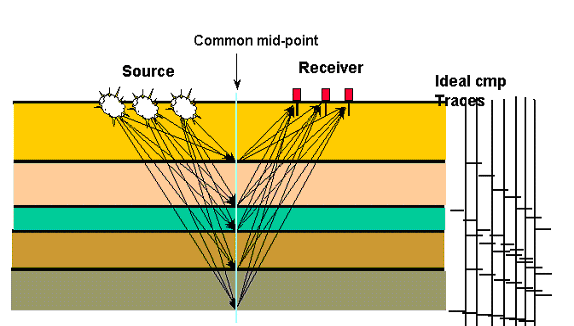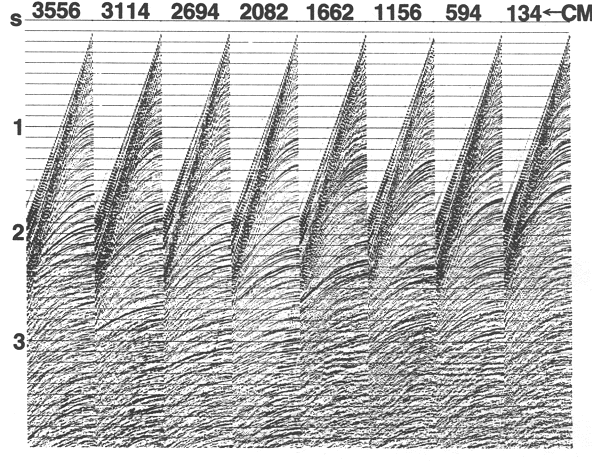
A collection of the traces having from source-receiver combinations that have the common midpoint is called a common midpoint or CMP gather. In the flat layer scenario discussed so far the reflection from a boundary is located half the distance from the source to the receiver if the source and receiver are at the same elevation. If multiple sources and receivers are used and the spacing between the sources and receivers is set up correctly more than one source receiver pair will have the same midpoint. This means that several reflections are obtained from the same subsurface location. This is illustrated in the figure below.

Figure 23 Common midpoint gather.
During the stacking phase of processing the data is resorted into common midpoint gathers using the survey geometry information. This is also referred to as the Common Depth Point or CDP. The number of source receiver pairs that produce reflections at the same point is referred to as the fold. The fold and number of CDPs per shotpoint depend on the number of receivers, the receiver spacing and the shotpoint interval.
In the figure below the common shot gathers of the data shown previous display have sorted into CMP gathers. Only a few of the CMP gathers from the entire 2D line are displayed. The reflectors have a hyperbolic shape that is determined by the offset and the velocity of the materials in the earth that the signal passes through.

Figure 24 Common midpoint gathers. (Yilmaz, 1987)